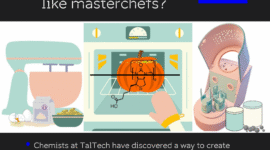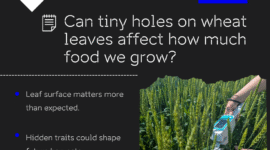The Estonian wood industry creates over a million tonnes of wood waste each year, which is mainly used as heating material. In addition to that, we have an abundance of low-value wood and pulpwood, which often do not have any application in the local industry. In business terms, this is a considerable amount of raw material that is lost to Estonian economy.
However, research institutions have the knowledge necessary for developing the technology for raising the value of wood. Estonian wood industry is mainly focused on the mechanical processing of wood, which results in the production of construction materials and wooden houses, for example. These technological solutions are already mature and relatively well-rooted in companies, as are the target markets the goods are sold to.
According to the head of the Estonian Forest and Wood Industries Association, Henrik Välja, great changes and innovations are currently happening in chemical processing of wood, which helps create new value chains. Wood is also a source for substances that could be used in the textile, cosmetics, pharmaceutical and packaging industries, for example. Unfortunately, there are only a handful of companies in Estonia processing wood chemically.
At the Core Facility for Chemistry and Bioprocessing of the University of Tartu, new technological solutions are under development, which could bring an industry to the Estonian wood sector, which is innovative, provides several times more added value than before and has a smaller ecological footprint. Wood bioprocessing uses enzymes found in cells for processing the parent compounds derived from pulp. As a result, it is possible to produce valuable fine chemicals and materials.
According to a UT professor of molecular systems biology, Mart Loog, the university’s scientists are looking for possibilities that would help obtain from microbial cell factories in an industrially productive way colourants suitable for the cosmetics industry (carotenoids), fatty acids used in the food and materials industry (linolenic acid), as well as parent compounds of anticancer drugs (betulinic acid).
Also, a method is under development for producing phenol-aldehyde resins and glues from lignin – a natural binder that lends rigidity to the wood. Compared to the traditional chemical industry, the ecological footprint of bioprocessing is significantly smaller.
When talking of innovation, the head of the executive committee of the Estonian Fund for Nature, Tarmo Tüür, finds that environmental protection and better health are important criteria, which should be set as an ever clearer goal besides economic indicators.
More value without increasing the level of logging
Last year, work was commenced at the UT Gas Fermentation Technologies lab to study how to create fine chemicals from gasified wood waste using cell factories. The lab is cooperating with the large American biotechnology enterprise, LanzaTech.
“We are looking at how to use acetogenic bacteria to bind carbon monoxide, but in the future, also carbon dioxide, and as a result, produce chemicals which could be starting materials for producing biodegradable plastic, among other things,” said Loog.
Currently, Graanul Biotech OÜ, a subsidiary of Graanul Invest, is making a great developmental leap in the field of wood biorefining and is establishing a pilot plant in Imavere with novel technology for wood fractionating or dividing into particles. In this field, the company is also collaborating with the UT Core Facility for Chemistry and Bioprocessing.
“When in the times of EstFor (a company that was planning a cellulose plant near the city of Tartu – P. E.) we were saying that the technology planned there would have been 150 years old and polluting for the environment, then Imavere will have one of the most innovative plants with some of the cleanest technology,” said Loog.
The plant will produce lignin and wood sugars from low-value wood and sawdust, which can be biologically turned into various high-value fine chemicals or widely-used biomaterials, such as resins, glues and plastics. This is a good example of production with larger added value without increasing logging.
“Estonia has a great opportunity to be one of the first to take the innovative path, as these technologies have only become possible in recent times and thanks to synthetic biology. Scandinavia, where contributions have been made into wood chemistry for the last 20 years, has not yet considered this field much in their investments,” noted Loog.
Loog finds that when developing business models for bioeconomy, the easy way out of using technology that is already known and tested should be avoided.
“Since the end of the 1960s, we have a molecular biology tradition, laboratories and trained specialists in Tartu. Today, the methods of molecular biology can be used to create cells, which may produce dozens of very expensive separable chemicals during one and the same process,” explained Loog.
He added that in the traditional chemical industry, all synthesis steps would be done in separate reactors, each requiring energy and causing harm to the environment. “With the biological process, something like beer brewing takes place in the cell. The development of such technologies requires greater support for curiosity-driven science,” emphasised Loog.
New technology from science to industry
In the UT, there is a plan to establish an industry association with the Centre for Synthetic Biology, bringing together companies interested in such technological developments.
“Similarly to the western Europe and North America, Estonian industry could come together in this association and contribute to the development of basic research as well as operational activities. We have a lot of free land on the Maarjamõisa campus, a detailed plan and 13 plots. Estonian bioindustry companies should pool their money and build centres for wood industry and bioeconomy research with all the important levels of research necessary for knowledge-based economy represented – from curiosity-driven research to product development,” appealed Loog.
[vc_row is_section=”yes” remove_margin_top=”yes” remove_padding_top=”yes” remove_padding_bottom=”yes”][ultimate_info_table design_style=”design04″ package_heading=”Industry association”]
An industry association for synthetic biology and sustainable technologies
- creates opportunities for bioeconomy enterprises to develop cooperation networks born out of the new funding programme of the European Commission and the Green Deal, and to find partners;
- introduces companies to the new technologies being developed in the world in the field of wood, biomass and waste processing, carbon sequestration, smart agriculture and circular economy;
- offers training in the field of managing, coordinating and writing bioeconomy projects funded by the European Commission;
- tries to find a consensus among interested parties on the development options for Estonian bioeconomy.
[/ultimate_info_table]
Also, an industry association creates favourable conditions for involving international companies and lays the groundwork for Estonia to develop into a hub of bioindustry.
The head of the Estonian Forest and Wood Industries Association, Henrik Välja, finds that reaching a consensus between local companies necessary for participating in a common industry association is quite difficult. In his opinion, leaders of Estonian wood industry companies are interested in innovation, but the smallness of the companies and the relatively small number of innovators in the entire sector becomes decisive in the development of new technology.
“Wood chemistry is science-heavy and requires a lot of investments, competitors are large and their research budgets may exceed the entire Estonian research funding. With such competition, developing completely new technologies is difficult for our companies,” said Välja.
As long as the development directions of companies are in strong correlation with established market patterns, change is slow to happen. The European Green Deal as well as the EU Biodiversity strategy demonstrate the will to foster the commissioning of environmentally friendly technology.
The head of the executive committee of the Estonian Fund for Nature, Tarmo Tüür, pointed out that the Estonian state is not directing the wood industry purposefully towards the path of innovation, even not via funding measures. “Rather, the effect of forest policy has been the opposite. As logging conditions are relaxing increasingly, and wood is available at an affordable price and in large quantities, this does not motivate entrepreneurs to develop sustainable and smart solutions,” said Tüür.
At Paide Opinion Festival in August, Mart Loog from the University of Tartu, Rando Värnik from the Estonian University of Life Sciences, Henrik Välja from the Estonian Forest and Wood Industries Association, Tarmo Tüür from the Estonian Fund for Nature and Aavo Sõrmus from the Center of Food and Fermentation Technologies discussed how to use Estonian wood and food smarter
[vc_separator]
Smart value-adding for local natural resources
With the support of the resource value-adding programme of the Estonian Research Council, within the next three years, seven applied research studies will be conducted for developing technologies for the separation of wood into components and enabling chemical and biochemical value-adding. This allows to add value to the wood types and wood industry wastes little used in Estonia more diversely and with a higher added value than before.
According to the head of the ResTA programme, Indrek Tulp, in addition to developing specific technologies, it is important that new know-how is created in the field of wood chemistry and bioprocessing and that specialists are trained within the projects. This will in turn facilitate establishing cooperation links with sectoral companies, so that new solutions can be implemented.
Five studies will be carried out with the participation of the University of Tartu. As other partners, studies will also be carried out by the Tallinn University of Technology and the Estonian University of Life Sciences. The total budget for the seven studies is €3.7 million.
Author: Piret Ehrenpreis, University of Tartu Research Communication Adviser
The translation of this article from the University of Tartu magazine Universitas Tartuensis was funded by the European Regional Development Fund through Estonian Research Council.
 Back
Back



